Annual vaccination against Clostridium perfringens types C and D and Clostridium tetani (CD&T) is one easy way to prevent disease in your goat herd. Background information on Clostridial diseases is provided, as well as techniques for administering the vaccination to your own animals.
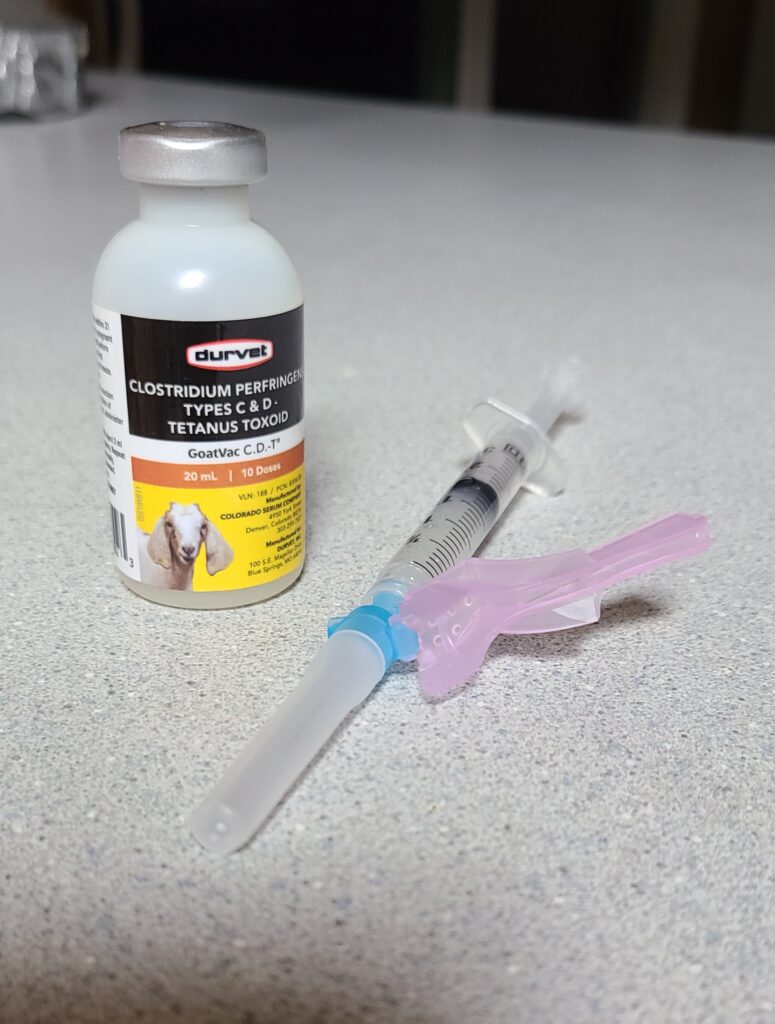
This post contains affiliate links. As an Amazon Associate, I earn from qualifying purchases.
An annual vaccination against Clostridium perfringens types C and D and Clostridium tetani is one easy way to prevent disease in your goat herd. Clostridia bacteria are everywhere, they live in the soil, dust, manure, and digestive tracts of mammals.
About Clostridial Diseases
When given the opportunity to thrive unchecked, Clostridium perfringens types C and D cause a disease called enterotoxemia. Enterotoxemia, also called overeating disease, causes severe digestive disruption in the animal. Unfortunately, it comes on quickly (giving farmers little time to respond) and is often fatal. Enterotoxemia is more likely to affect goats that are on a high grain diet, those that overeat on new spring growth, or those that experience rapid changes to their diet.
Clostridium tetani, on the other hand, causes tetanus or lockjaw. This bacterium usually enters the body through a break in the skin, at the site of an injury. The toxins released by the bacterium cause muscle spasms and pain that become increasingly worse over a period of days. If not treated, tetanus can interfere with the animal’s ability to eat and breathe- which can result in death.
How the Vaccine Works
The CD&T or CDT vaccine (named for the bacterium it protects against) prevents both enterotoxemia and tetanus. According to Armstrong (2016), the vaccine works by prompting the animal’s body to recognize and respond to the toxins produced by clostridial bacteria and eliminate them before disease ensues.
When to Vaccinate
Ideally, baby goats should obtain their initial protection against clostridial diseases from their vaccinated mother. To ensure this happens, pregnant does can be vaccinated 1 month prior to their due date. This provides enough time for the doe to produce antibodies and pass them through colostrum to their newborns.
Kids born to vaccinated dams should receive their own vaccine at 4-6 weeks of age, followed by a booster 1 month later.
According to Whitely (2019), baby goats born to unvaccinated dams should get their vaccine at 1-3 weeks of age, and should receive a booster 1 month later.
After a goat has had both their initial and booster shot, they should receive a routine vaccination at the same time every year to keep up their immunity.
Pet owners and livestock producers need to keep good records to make sure their animals are adequately protected. I use the Livestocked app to document vaccinations that I give on my farm.
It should be noted that goats should not be slaughtered within 21 days of receiving this vaccine. Also, a withdrawal time for use of milk after vaccination has not been established in the literature.
How to Vaccinate
Before you start, make sure your vial is not expired and that it has been stored properly. CD&T vaccines should be kept in the refrigerator and used in one sitting.
Shake the bottle well before drawing up a dose.
The vaccine dosage is 2 mL regardless of the age of the animal, or whether it is an initial or booster shot. A 3 mL syringe is sufficient for giving a CD&T vaccine. I use 1-inch, 20-gauge needles on my goats.
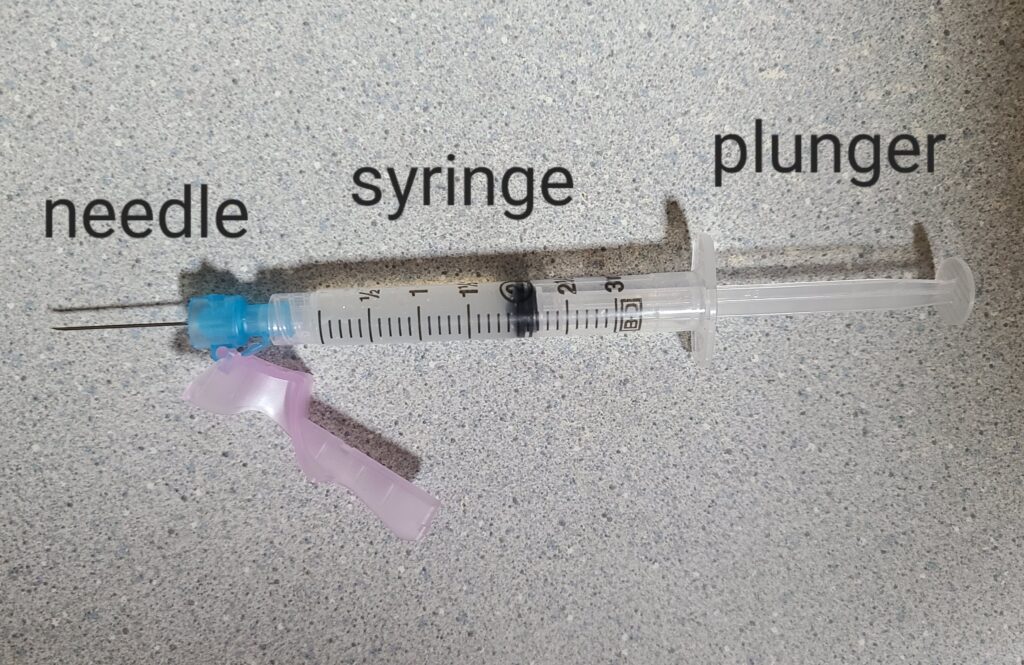
Draw up 2 mL of the solution and flick the syringe to make sure there are no air bubbles present.
The CD&T vaccine should be given subcutaneously (SQ or Sub-Q). This means that a needle is used to deposit the vaccine under the skin but above the underlying muscle and connective tissue. Since you don’t have to go in very far, this is a safe and relatively simple injection to administer.
To administer, it is helpful to have someone help stabilize the goat and hold it still. A stanchion could be used as well.
Give the injection behind the point of elbow.
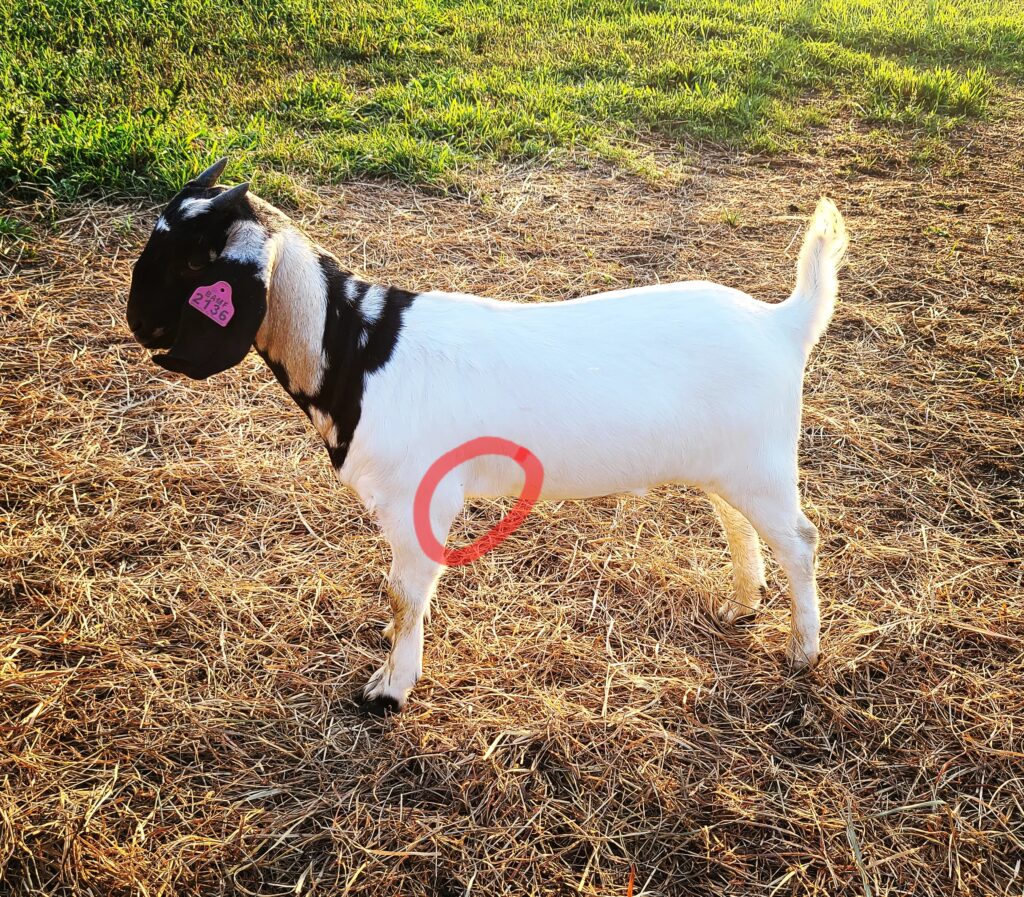
With your non-dominant hand, “tent” or lightly pull on the loose skin behind the front leg (see picture). Using the syringe in your dominant hand, penetrate the goat’s skin into the tented area with the needle. Keep the bevel up, facing you.
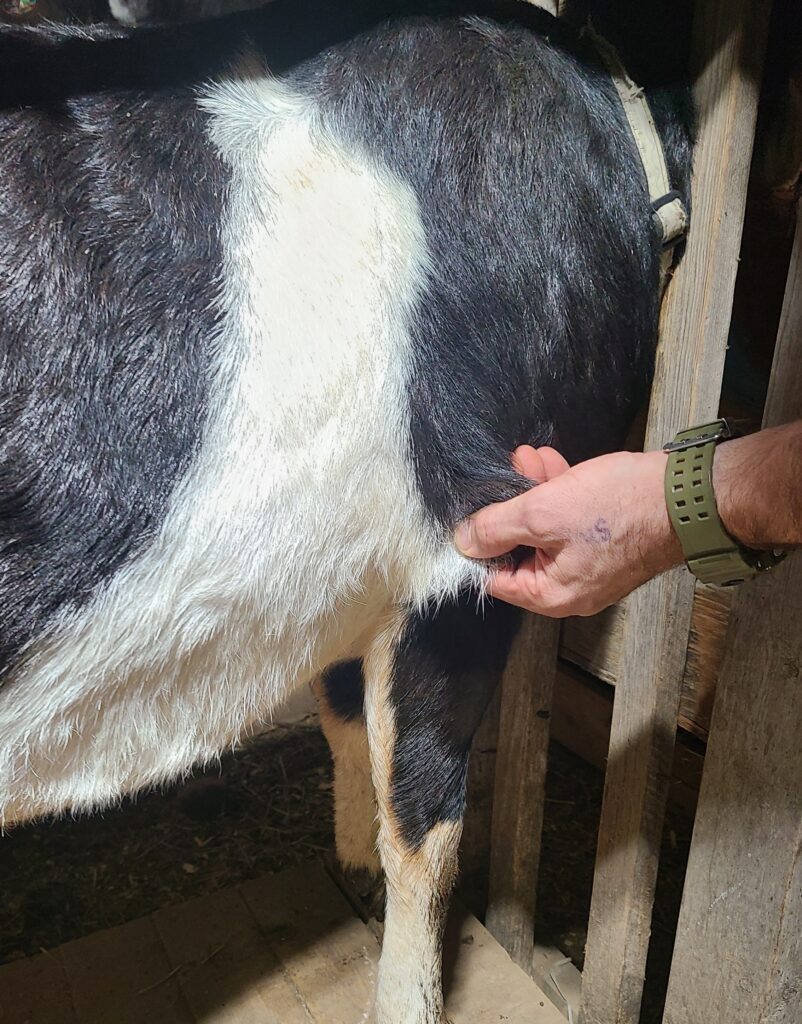
Slightly pull back on the plunger to check for any blood to come into the syringe (this means you are in a blood vessel, which you don’t want). If there is blood, move the needle slightly and check again.
Depress the plunger fully to inject all of the vaccine in the subcutaneous space. Remove the needle and carefully recap it.
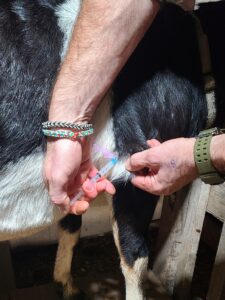
A new needle should be used for each animal. Used needles should be placed in an impenetrable “sharp’s” container. If you don’t have a real “sharp’s” container, you can make one from an empty laundry detergent bottle. All you need to do is label it as a sharps container and when it is full, dispose of it properly. For more information on making a farm sharps container read my article here.
You will probably be able to feel a little ball in the tissue of the goat’s armpit at the site of the injection. This is normal and usually it absorbs slowly and disappears. In some goats, you can feel the injection site permanently. Don’t worry though, livestock judges and breeders will know due to the location and animal’s medical history that it nothing to worry about.
Make sure your records include the date, brand of vaccine, amount administered, and side (right or left) where the injection was given. Also include notes if the animal experiences any adverse reactions.
It is a good idea to keep epinephrine on hand in case your goat has an anaphylactic reaction to the vaccine. It is uncommon, but some goats have difficulty breathing after vaccination due an allergy to the components and it can be life threatening within minutes if not treated.
Epinephrine is a prescription drug and can be obtained through a licensed veterinarian. The dosage for epinephrine is 1 mL per 100 pounds of body weight and is administered intramuscularly (IM) or SQ in an emergency situation.
Are you interested in other goat topics? Search “goats” on my blog for more articles to keep your herd healthy and happy!
References:
Armstrong, D. (2016). Clostridia disease- How to vaccinate and protect against it. Retrieved from https://blog.livestockfarming.co.uk/posts/sheep/clostridia-disease.aspx
N. Whitely. (2019). Goat vaccination program. Retrieved from https://goats.extension.org/goat-vaccination-program/

Mother, farmer, author, and teacher by trade… She loves tending to things and watching them grow!
